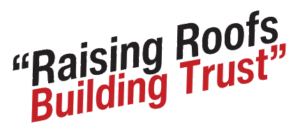Attic Insulation for Your Home: Essential Guide to Energy Efficiency and Comfort
Attic insulation is one of the most effective ways to improve your home’s energy efficiency, comfort, and overall environmental impact. Whether you’re building a new home or upgrading your current one, installing proper roof insulation is crucial for reducing energy bills, preventing heat loss, and creating a more comfortable living environment year-round.

In this article, we’ll explore the importance of attic insulation, different types of insulation materials, benefits of proper installation, and maintenance tips. Whether you’re considering installing roof insulation yourself or hiring a professional, this guide will help you make an informed decision that suits your needs and budget.
What Is Attic Insulation?
Attic insulation refers to the materials used in the roof’s attic space of a home or building to resist temperature transfer, keeping your home warmer in the winter and cooler in the summer. It helps to regulate indoor temperatures by reducing heat loss or gain through the roof, which is one of the largest sources of heat transfer in a home.
Effective roof insulation also contributes to soundproofing, reduces condensation, and helps to maintain consistent temperatures throughout the home. It is typically installed in the attic or under the roof deck, depending on the structure of the building.
Why Roof Insulation is Essential for Your Home
Proper roof insulation provides numerous benefits, making it a key component of your home’s energy efficiency and comfort. Here are some of the reasons why roof insulation is essential:
1. Energy Efficiency and Lower Utility Bills
One of the primary reasons homeowners invest in roof insulation is to save money on energy costs. Insulating your roof reduces the need for heating and cooling so that the HVAC systems don’t have to work overtime. This also helps maintain a more stable indoor temperature which provides a more comforting home environment. In the winter, insulation prevents warm air from escaping through the roof and helps to prevent cold air from entering, During the summer months, attic insulation keeps hot outdoor air from infiltrating your home and keep cooler air inside. This can lead to significant reductions in your heating and cooling bills.
2. Improved Comfort
A well-insulated roof contributes to a more comfortable indoor environment. During extreme weather conditions, such as heatwaves in summer or cold snaps in winter, insulation helps to keep your home cozy and consistent in temperature. This reduces drafts, cold spots, and overheating, ensuring your living space remains comfortable all year.
3. Environmental Benefits
Roof insulation helps reduce your home’s carbon footprint by decreasing the need for excessive heating or cooling. By using less energy to regulate the temperature, you’re reducing your home’s reliance on fossil fuels and contributing to a more sustainable and environmentally friendly lifestyle.
4. Prevents Moisture Issues
Roof insulation can also help prevent condensation in the attic or roof cavity. When warm air rises, it can trap moisture in the attic, leading to mold, mildew, and even structural damage. A well-insulated roof regulates temperature and humidity levels, preventing moisture buildup and keeping your home safe from mold and mildew.
5. Noise Reduction
Roof insulation can act as a sound barrier, absorbing noise from both the outside and inside. Whether it’s rain, hail, or traffic sounds, roof insulation can help make your home quieter and more peaceful.
Types of Roof Insulation Materials
There are several types of roof insulation materials, each with its benefits and considerations. The choice of material depends on factors like your climate, budget, and roof type. Here are the most common types of roof insulation:
1. Fiberglass Insulation
Fiberglass insulation is one of the most popular types of roof insulation due to its effectiveness, affordability, and ease of installation. It comes in batts, rolls, or loose-fill form and provides excellent thermal resistance. Fiberglass insulation is made from glass fibers and is usually treated to be fire-resistant.
- Pros: Affordable, easy to install, excellent thermal performance.
- Cons: Can irritate the skin, requires proper sealing to prevent air leaks.
2. Spray Foam Insulation
Spray foam insulation is applied as a liquid that expands into a solid foam, filling gaps and creating an airtight seal. It is highly effective at preventing heat transfer and is ideal for roofs with irregular shapes or hard-to-reach areas.
- Pros: Provides an air-tight seal, reduces energy loss, excellent for uneven spaces.
- Cons: Higher installation cost, requires professional installation.
3. Cellulose Insulation
Cellulose insulation is made from recycled paper products and is often used as loose-fill insulation. It is treated with a fire-retardant material and is typically blown into the roof cavity. Cellulose insulation is environmentally friendly and provides excellent thermal performance.
- Pros: Eco-friendly, excellent at filling gaps, soundproofing qualities.
- Cons: Can settle over time, making it less effective in the long term.
4. Mineral Wool (Rock Wool) Insulation
Mineral wool, also known as rock wool or stone wool, is made from natural minerals like basalt or diabase. It is resistant to fire, water, and pests, and it provides good soundproofing and thermal resistance.
- Pros: Fire-resistant, water-resistant, excellent for soundproofing.
- Cons: Heavier and more difficult to install than fiberglass, more expensive.
5. Reflective or Radiant Barrier Insulation
Reflective insulation is typically used in warm climates to reduce heat buildup in the attic. It is made from materials like aluminum foil, which reflects radiant heat away from the home. This type of insulation is most effective when installed in the attic space, where it can reflect sunlight and heat.
- Pros: Effective for hot climates, reduces cooling costs.
- Cons: Less effective in colder climates, often used in combination with other forms of insulation.
6. Cotton (Denim) Insulation
Made from recycled cotton fabric, denim insulation is an eco-friendly alternative to fiberglass. It provides good thermal resistance and is a safer option, as it does not contain harmful chemicals or irritants.
- Pros: Eco-friendly, safe to handle, good thermal performance.
- Cons: More expensive than fiberglass, may not be as readily available.
Roof Insulation Installation Methods
The method of installation depends on the type of insulation you choose and the structure of your roof. Here are the most common installation methods:
1. Blown-In Insulation
Blown-in insulation (often cellulose or fiberglass) is blown into the attic or roof space using a machine. It works well for irregular spaces and gaps, as the material can fill even the smallest cracks.
- Best for: Attics, ceilings, and spaces with uneven framing.
- Installation: Requires professional equipment.
2. Batt or Roll Insulation
Batt or roll insulation comes in pre-measured lengths and is laid between the rafters or joists in the roof space. This is a more DIY-friendly option and is typically used in attics with standard framing.
- Best for: Standard attic spaces with easily accessible framing.
- Installation: Can be installed by homeowners with basic DIY skills.
3. Spray Foam Insulation
Spray foam insulation is applied by professionals as a liquid that expands to form an airtight seal. It’s ideal for irregular or hard-to-reach roof spaces.
- Best for: Unconventional roof shapes, areas with lots of gaps.
- Installation: Professional installation required.
Signs You Need Attic Insulation
If you’re unsure whether your home needs additional roof insulation, here are a few signs to look for:
- Drafts and Cold Spots: Noticeable cold spots or drafts in your home during winter can be a sign that your roof is not adequately insulated.
- High Energy Bills: If your heating and cooling costs have increased significantly, it could be due to poor roof insulation.
- Condensation: Visible condensation in your attic or on your roof can indicate that moisture is not being properly managed.
- Ice Dams: If ice forms along the edge of your roof during winter, it could be a sign that warm air is escaping from your attic, causing snow to melt and refreeze.
Conclusion
Roof insulation is a smart investment for homeowners looking to improve energy efficiency, reduce heating and cooling costs, and increase the comfort and longevity of their home. By understanding the different types of insulation materials, installation methods, and benefits, you can make an informed decision about what’s best for your home.
If you’re considering adding or upgrading your roof insulation, consult a professional contractor to assess your needs and ensure a proper installation. Proper insulation will not only help you save money on energy bills but will also protect your home from moisture damage, mold, and the elements.

 Previous Post
Previous Post Next Post
Next Post


